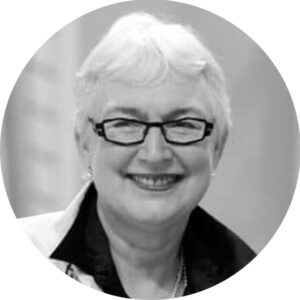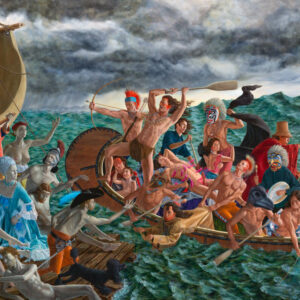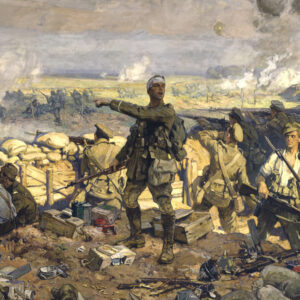-
Kane, Paul (Irish/Canadian, 1810–1871)
Influenced by the American artist George Catlin, this nineteenth-century painter and explorer spent extensive time documenting Indigenous Peoples in North America and depicting, in a traditional European style, scenes of their culture and landscapes. The Royal Ontario Museum in Toronto houses one hundred paintings and several hundred sketches by Kane. See artwork by this artist.
-
Kavanagh, Mary (Canadian, b.1965)
A multi-disciplinary artist and fine arts professor, Kavanagh has explored environmental degradation, the material evidence of war and weapons, and the nuclear industrial complex in her art. A participant in the Canadian Forces Artists Program in 2012–13, Kavanagh has also completed research residencies at the National Atomic Testing Museum in Las Vegas, Nevada (2014), and the National Museum of Nuclear Science and History in Albuquerque, New Mexico (2015). Kavanagh is currently a Canada Research Chair (Tier I) at the University of Lethbridge. See artwork by this artist.
-
Kearns, Gertrude (Canadian, b.1950)
A self-taught painter and participant in the Canadian Forces Artists Program, Kearns has worked on themes of conflict since the early 1990s. Seeking to portray the complexity of military power in conflict, Kearns’s paintings are regularly viewed as controversial. She received the Order of Canada in 2019 for her artistic contributions to Canadian military history. See artwork by this artist.
-
Keelor, Arthur (Canadian, 1890–1953)
A freelance graphic designer during the First World War, Keelor designed notable propaganda posters to support the Canadian war effort, including For Industrial Expansion, Buy Victory Bonds, c.1917. Unlike more traditional campaign posters, Keelor’s work was inspired by early twentieth-century heroic realist imagery. See artwork by this artist.
-
Kennedy, Garry Neill (Canadian, 1935–2021)
Born in St. Catharines, Ontario, and based in Halifax, Kennedy was a pioneering Conceptual artist and distinguished art educator and arts administrator. He was president of the Nova Scotia College of Art and Design University (1967–90), which he transformed from a conservative institution into a leading centre for Conceptual art. As an artist, he is widely known for his paintings investigating institutional power within and beyond the art world.
-
Kerr-Lawson, James (Scottish/Canadian, 1862–1939)
Both a skilled lithographer and a painter of landscapes and urban scenes, Kerr-Lawson immigrated to Canada as a child. He studied first at the Ontario School of Art, and later in France and Italy. He returned to Canada in 1885, but after a brief stay he moved to Europe, establishing himself in Glasgow and London. In 1908 Kerr-Lawson became a founding member of the Senefelder Club to promote interest in lithography. He also exhibited with the Canadian Art Club from 1912 to 1915. See artwork by this artist.
-
Krieghoff, Cornelius (Dutch/Canadian, 1815–1872)
A painter who emigrated to the United States from Europe in 1837 and then moved to Canada. Krieghoff was drawn to First Nations peoples and environments as subjects; he also painted landscapes and scenes of everyday Canadian life. See artwork by this artist.
-
 About the Author
About the Author
Laura Brandon was the Historian, Art and War, at the Canadian War Museum from 1992 until 2015.
-
 More Online Art Books
More Online Art Books
Read online or download the ACI’s incredible library of art books for free in French and English.
Learn More -
 Read from Beginning
Read from Beginning
Throughout history, there have always been conflicts between different peoples and rival countries.
Learn More
